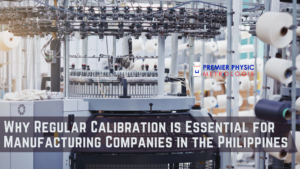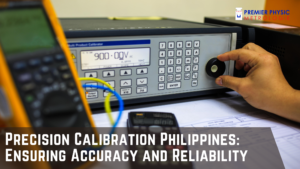Calibration, a crucial process in ensuring measurement accuracy, is often shrouded in misconceptions. These misunderstandings can lead to improper calibration practices, inaccurate measurements, and ultimately, compromised quality and safety. It’s vital to dispel these myths and establish a clear understanding of what calibration truly entails. This comprehensive article addresses 10 prevalent misconceptions about calibration, revealing the truth behind each and emphasizing the importance of proper calibration procedures for reliable and accurate measurements.
Misconception 1: Calibration is a One-Time Event:
Many believe that once an instrument is calibrated, it remains accurate indefinitely. This is far from the truth. Instruments can drift over time due to factors like wear and tear, environmental conditions, and usage. Calibration is not a one-time event; it’s an ongoing process.
The Truth: Calibration needs to be performed periodically, based on factors such as the instrument’s stability, usage, and the criticality of the measurement. Regular recalibration ensures that the instrument maintains its accuracy over time. A well-defined calibration schedule is essential for reliable measurements.
Misconception 2: Calibration is the Same as Adjustment:
Some mistakenly believe that calibration solely involves adjusting the instrument’s readings. While adjustment is often a part of the calibration process, it’s not the only aspect.
The Truth: Calibration involves comparing the instrument’s readings to a known standard and documenting the difference. Adjustment is only performed if the readings fall outside the acceptable tolerance limits. Calibration focuses on establishing the relationship between the instrument’s readings and the true value, whether or not an adjustment is needed.
Misconception 3: All Instruments Need the Same Calibration Frequency:
A common misconception is that all instruments require the same calibration interval. This blanket approach can be inefficient and costly.
The Truth: The appropriate calibration frequency varies depending on several factors, including the type of instrument, its stability, its usage, the environment it operates in, and the risk associated with inaccurate measurements. A risk-based approach should be used to determine the optimal calibration interval for each instrument.
Misconception 4: Only High-Precision Instruments Need Calibration:
Some believe that only high-precision instruments require calibration, while less precise tools can be used without it. This is a dangerous misconception.
The Truth: While high-precision instruments might require more frequent and stringent calibration, all measuring instruments, regardless of their precision level, should be calibrated. Even seemingly small inaccuracies in less precise tools can accumulate and lead to significant errors, especially in critical applications.
Misconception 5: Calibration Guarantees 100% Accuracy:
No calibration can guarantee 100% accuracy. There will always be some degree of uncertainty associated with any measurement.
The Truth: Calibration aims to minimize measurement uncertainty and bring the instrument’s readings as close as possible to the true value. However, factors like environmental conditions, instrument resolution, and operator skill can contribute to measurement uncertainty. Calibration reports should include an estimate of measurement uncertainty to provide a realistic assessment of the measurement’s accuracy.
Misconception 6: Calibration is Only Necessary for New Instruments:
Some believe that only new instruments need calibration. This ignores the fact that instruments can drift and degrade over time.
The Truth: Even well-maintained instruments can experience changes in their performance over time. Regular calibration is essential throughout the instrument’s lifespan to ensure that it continues to provide accurate readings.
Misconception 7: Calibration Can Be Performed by Anyone:
Calibration requires specialized knowledge, skills, and equipment. It’s not a task that can be performed by just anyone.
The Truth: Calibration should be performed by trained and qualified personnel who understand the instrument’s operating principles, the calibration procedure, and the relevant standards. Using proper calibration equipment and following established procedures are crucial for accurate and reliable results.
Misconception 8: Calibration is Too Expensive:
Some view calibration as an unnecessary expense. However, the cost of inaccurate measurements can be far greater.
The Truth: While calibration does involve costs, it’s an investment in quality, safety, and efficiency. Inaccurate measurements can lead to product defects, production downtime, safety hazards, and costly rework. The benefits of accurate measurements far outweigh the cost of calibration.
Misconception 9: Verification is a Substitute for Calibration:
Verification is the process of checking that an instrument is performing within its specifications. Some mistakenly believe that verification can replace calibration.
The Truth: Verification is not a substitute for calibration. It’s a complementary process that confirms the instrument’s performance between calibration intervals. While verification can identify potential issues, it doesn’t correct them. Calibration is necessary to adjust the instrument and improve its accuracy.
Misconception 10: Calibration Labels are All That Matters:
Some focus solely on the calibration label, assuming that it guarantees accuracy. However, the label is just an indication that the instrument was calibrated at a particular point in time.
The Truth: The calibration label is a record of the calibration date and due date. It doesn’t guarantee ongoing accuracy. The actual calibration process, the documented results, and the ongoing verification program are what ensure reliable measurements. The label is a helpful reminder of the next due date, but it’s the underlying calibration practices that truly matter.
The Importance of Proper Calibration:
Proper calibration is fundamental to ensuring measurement accuracy and reliability. It plays a crucial role in various fields:
- Quality Control: Calibration ensures that products meet specifications and that processes are running efficiently.
- Safety: Accurate measurements are critical for safety in various industries, from manufacturing to healthcare.
- Research and Development: Reliable measurements are essential for scientific discoveries and technological advancements.
- Trade and Commerce: Accurate measurements ensure fair trade and prevent disputes.
Conclusion:
By dispelling these common misconceptions and understanding the true nature of calibration, organizations can implement effective calibration programs that ensure measurement accuracy and reliability. Calibration is not just a technical process; it’s an investment in quality, safety, and success. By prioritizing proper calibration practices, organizations can build confidence in their measurements, improve their operations, and achieve their goals. It’s crucial to move beyond these misconceptions and embrace a culture of accurate and reliable measurement. This not only benefits individual organizations but also contributes to the overall integrity of measurement systems and the advancement of knowledge and technology.



